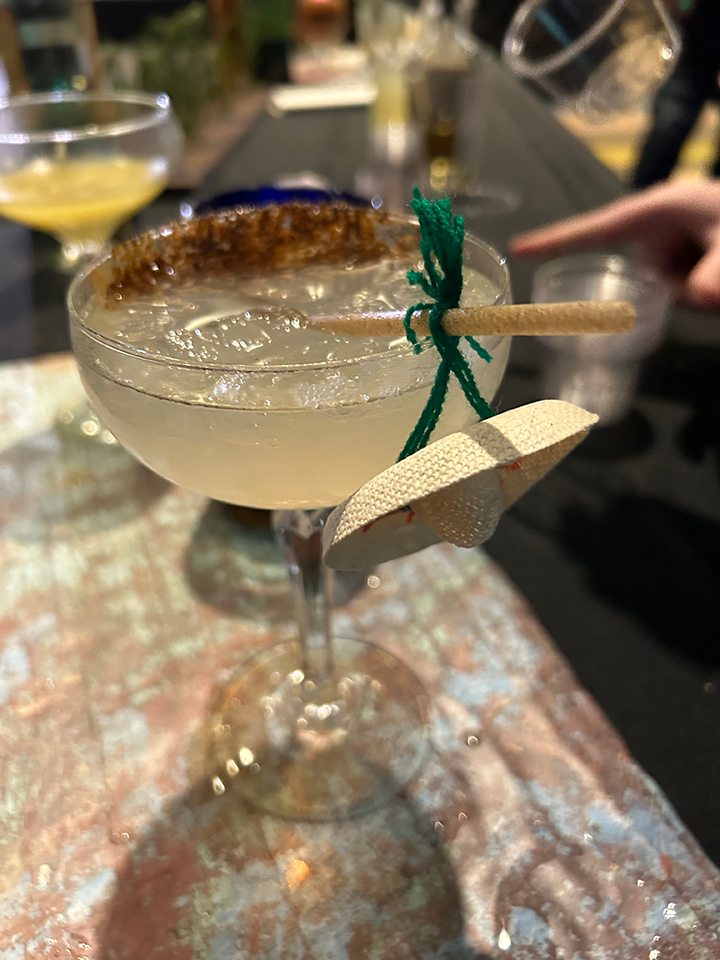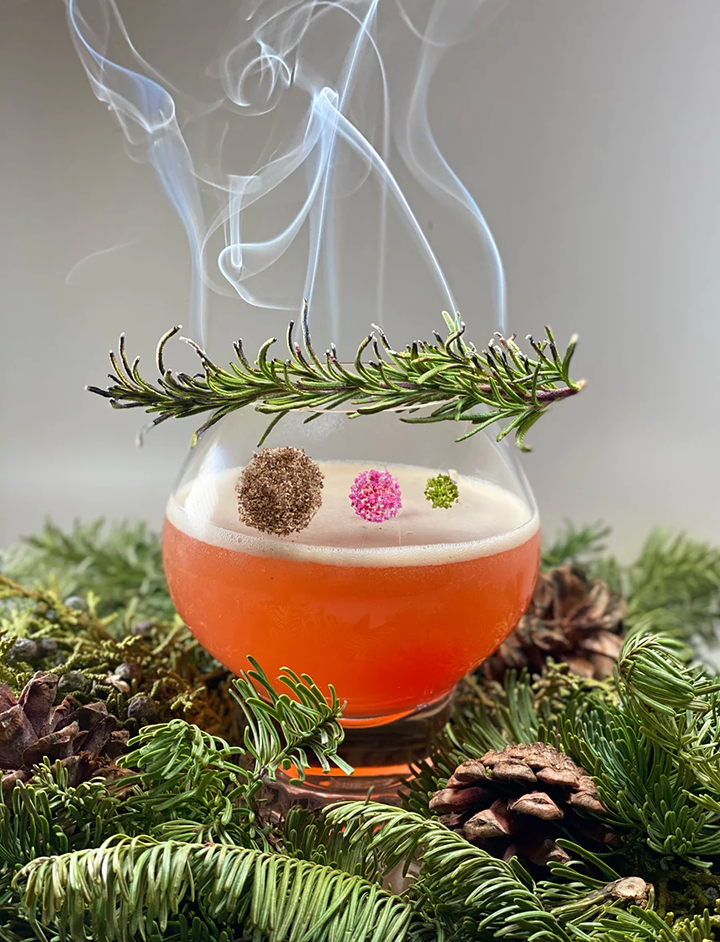Tequila can sometimes get a bad rap. Many people may not necessarily have the best of memories (or relationships) with tequila, thanks in no small part to spring break trips, college parties, and Cinco de Mayo celebrations. And who could forget Paul Reubens’ infamous bartop dance to The Champs’ “Tequila” in Pee Wee’s Big Adventure?
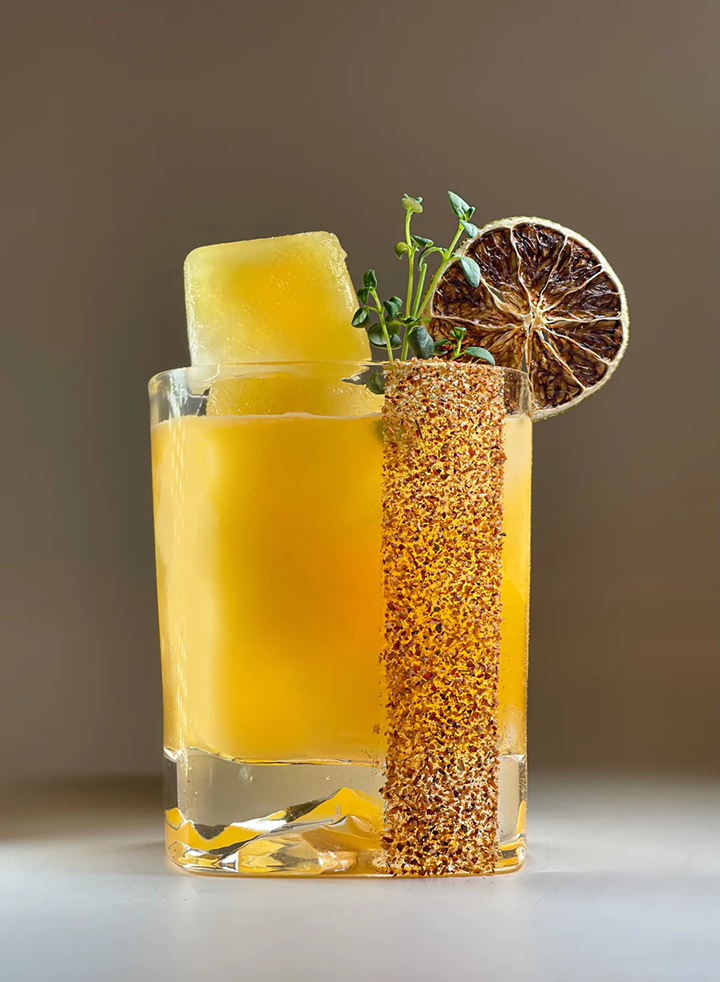
Peachy Nirvana (tequila, mezcal, Chile Ancho Liqueur, fresh lime juice, smoked maple syrup, ripe peach, and smoked serrano salt). Photo courtesy ©️Cocktail.Vision2021
But it’s really not fair to assign blame to tequila, when most often the bad memories come from bad choices, especially since tequila has proven time and again its ability to create complex, delicious cocktails.
Tequila has begun to break away from its former reputation now that it's dominating bar menus around the world. According to the Distilled Spirits Council of the US, agave-based liquors like tequila and mezcal were the fastest-growing spirits category of 2022 and are now poised to overtake vodka as the best-selling liquor in the United States this year. Tequila exports reached a record $3.6 billion between January and October of last year. This is an increase of 34.1% over the same period in 2021, according to data from The Ministry of Economy and the Agricultural Markets Consulting Group.
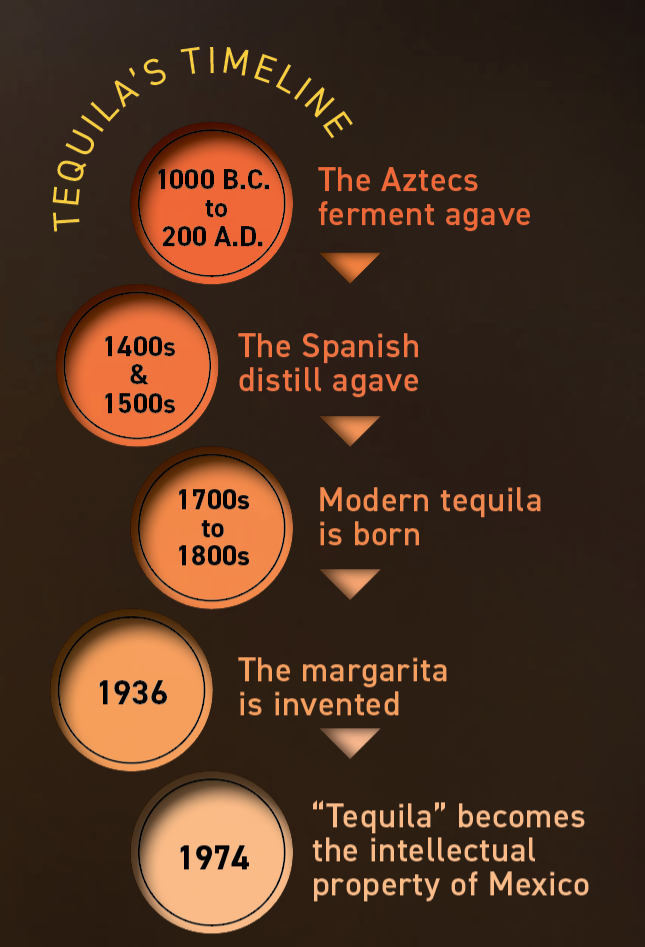
“The booming interest in both tequila and mezcal is really being driven by the spirits' deep-rooted heritage and tradition,” said Chris Swonger, president of the Distilled Spirits Council of the U.S. “America has such great affinity with Mexican culture; we clamor to go and eat Mexican food and tequila is very complementary to that.”
The art of the agave
There’s often a misunderstanding of what tequila actually is since it’s often used interchangeably with mezcal or other agave-based spirits. However, to be legally called “tequila” certain requirements must first be met.
Similar to how scotch and bourbon are types of whiskey, tequila is a type of mezcal. Mezcal is the over-arching category of Mexican spirits fermented and distilled from several varieties of the agave plant. It is produced all over Mexico under various names and designations.
Know Your Tequilas
Tequila is often classified by how long it is aged, which is why tequila can be found in five different types: blanco, reposado, añejo, extra añejo, and cristalino.
Blanco
A blanco, sometimes called plata or silver tequila, mostly remains unaged and retains a crystal clear appearance. Some are lightly rested in oak barrels for no more than 60 days, which can give them a pale green hue.
Flavor: Blancos can have a variety of flavor profiles, from sharp notes of citrus and pepper and a spicy finish, to creamy and smooth, with touches of vanilla and honey.
Reposado
Reposado (which means “rested”) sits in a barrel for two to 11 months. This is the predominant style of tequila consumed
in Mexico.Flavor: Reposado tequilas have prominent blue agave flavors and are often known to have notes of vanilla, honey,
and toasted nuts and tend to have an easier finish on the palate
than blancos.Añejo
Añejo (old) is aged for one to three years in an oak barrel. Any type of wooden barrel can be used but ex-American whiskey and French oak barrels are used the most.
Flavors: Flavor can vary widely from oaky and spicy to buttery and warm, but añejo tequilas often carry a lot of flavors like vanilla and brown sugar.
Extra añejo
Extra añejo tequilas mature for three years or longer in oak barrels. Extra añejo is considered ultra-premium and the pricing reflects that. Since this “extra-aged” spirit spends more time in contact with wood than any other variety of tequila, it has the strongest aromas and the richest amber color of any type.
Flavors: Notes of caramel, chocolate, cinnamon, and vanilla.
Cristalino
This is a new classification consisting of aged tequilas, usually añejos and extra añejos, that are filtered through charcoal. This process aims to remove tannins, enhance fruity and floral notes, and achieve a clear blanco-esque appearance.
Flavors: They offer a softened approach to a reposado, añejo, or extra añejo, often slightly sweeter with a lighter mouthfeel than their unrefined versions. For the most part, cristalinos maintain aged taste characteristics with pronounced aromas of caramel and vanilla.
Joven or Gold
Jovens are any blanco tequila that has an aged expression (reposado, añejo, or extra añejo) blended into it. Gold tequila is usually colored and flavored with oak extract, caramel, glycerin or other additives.
Information courtesy Sip Tequila
All tequila is mezcal, but not all mezcal is tequila.
To be classified as tequila, the spirit must be made in one of the five specific regions of Mexico (Guanajuato, Jalisco, Michoacan, Nayarit, and Tamaulipas) and made from 51% blue agave (at minimum), whereas mezcal can be made from a wide variety of agave.
Mezcal is often classified as having a smokier flavor profile than tequila.
“In my view, authentic tequila has a richness, complexity, and depth of flavor unmatched by other spirits,” said Juan Coronado with Mijenta Tequila.
But not all tequila is the same either.
Tequila made from agave that is grown in the valley will have a slightly different taste than tequila from agave grown in the highlands. In general, tequila from the valley will be bigger and bolder with herbal, floral, vegetal, citrus, and earthy aromatics and flavors. Tequilas from the highlands tend to be a bit softer, more delicate, and a tad bit sweeter.
“Make sure you’re tasting your tequilas, because not every tequila is created equal,” said Ivy Mix (Leyenda) in a session for Tales of the Cocktail 2020. “If you’re passionate about your own unique tequila creations, really think about the different qualities and characters that tequila brings to your cocktails and you will be better set up and better prepared to make cocktails that way.”
There are also two other agave-based spirits that fall under the umbrella of mezcal: bacanora (made from wild plants of agave pacifica) and raicilla (made from two varieties of agave—lechuguilla and puta de mula). Further complicating things is sotol, which is not made from agave but rather another succulent plant called desert spoon.
“Spirits truly are an agricultural product,” said Mix.
Trends in tequila
Tequila’s momentum can in part be attributed to the proliferation of celebrity-owned and endorsed brands, with everyone from George Clooney to The Rock to Kendall Jenner to Guy Fieri getting in on the action as the spirit’s popularity continues to soar.
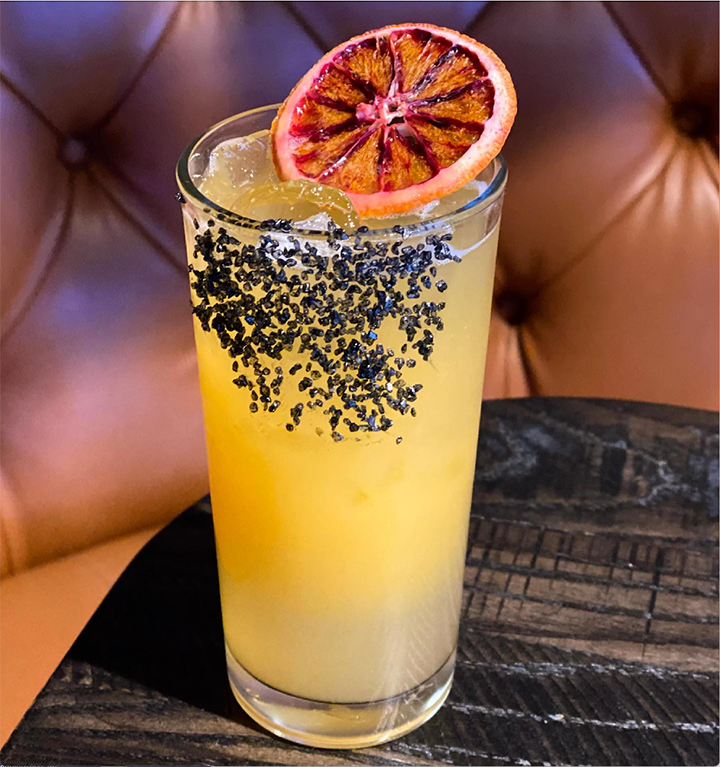
Le Pasion (Ilegal Mezcal Joven, creme de cacao, Lustau Amontillado Sherry, passion fruit syrup, and Topo Chico sparkling water). Photo Brynna Ringling (IG: @Brynna.Nic)
Another trend within the tequila market is the rise of unique flavored tequilas, according to Dimensional Insight. Fruit-flavored tequilas, such as lemon, lime, and grapefruit, are rising in popularity. These tequilas are designed to be sweeter and more approachable than traditional options, making them ideal for new customers who may previously have been intimidated by tequila’s bold reputation.
For the more experienced or adventurous tequila sippers, pepper infusions, such as jalapeños and ghost peppers, are also growing in popularity.
Perfect Pairings
As every good caterer knows, every good cocktail deserves the perfect bite to pair it with. While wines, beers, and bourbons lend themselves easily to food pairings, tequila might be a bit unfamiliar to some. Here are a few food ideas that can beautifully be paired with tequila.
- Loaded nachos
- Grilled bone marrow
- Crawfish boils
- ‘Nduja broiled oysters
- Lettuce soup
- Lightly grilled meats and fish
- Chocolate
- Mexican Chicken Mole Arepa
- Fried chicken
- Apples
- Peanut butter, banana, and bacon sandwiches
- Smoked beef cheek
- Bananas
- Charcuterie
- Raw fish
- Aged gouda Manchego
- Grilled octopus
- Grilled steak
- Tacos
- Grilled seafood and squid or prawns
- Vegetables (asparagus, corn, avocado, tomatillos, and green peppers)
- Recipes that use citrus
- Recipes that use coriander
- Pork
Information above courtesy: VinePair, Food & Wine, Matching Food and Wine
Some tequila brands are also experimenting with more unconventional ingredients, such as rose, elderflower, and cucumber. These unorthodox flavors make them ideal candidates for craft cocktails as well as presenting new options for consumers who have grown weary of traditional brands. On the cocktail side of things, Ranch Waters are all the rage, as are Mexican Martinis, Palomas, and of course, the classic margarita.
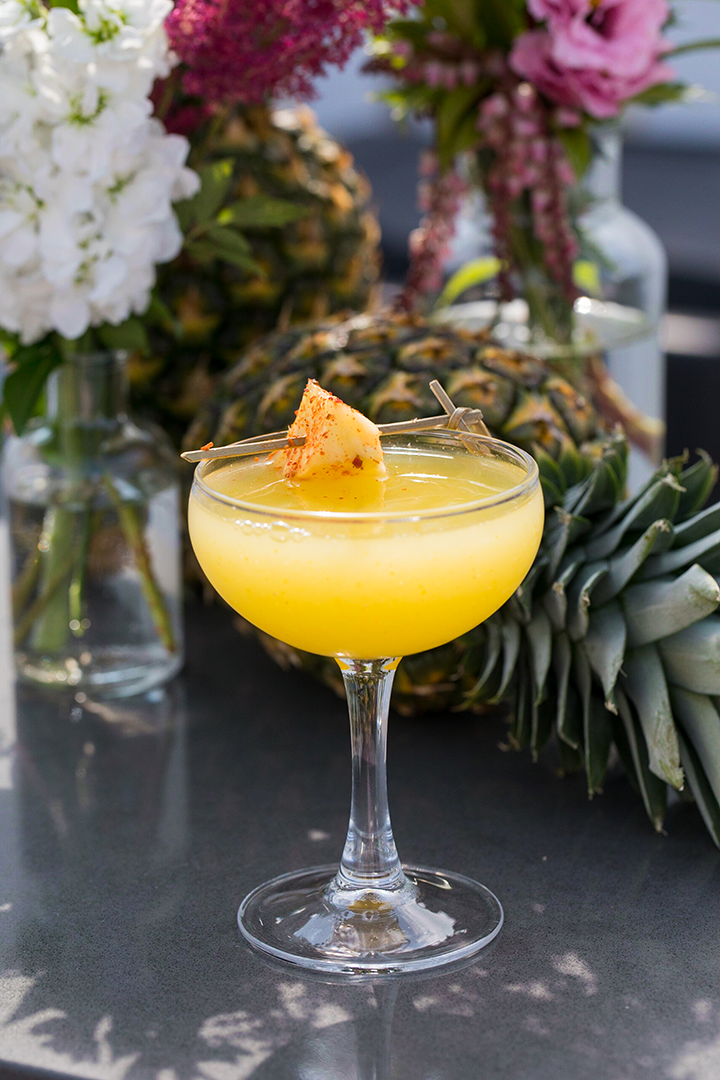
Teremana Two Step (Teremana Blanco, tonic, grapefruit bitters, and grapefruit). Photo courtesy Teremana
Check out the recipes below to help your menu put a new twist on tequila.
“Agave has to be grown with respect, harvested with respect, fermented with respect, distilled with respect, aged with respect, and in the end, you will hopefully get a beautiful distillate that you yourself can drink and then you can put those into your cocktails,” said Mix.
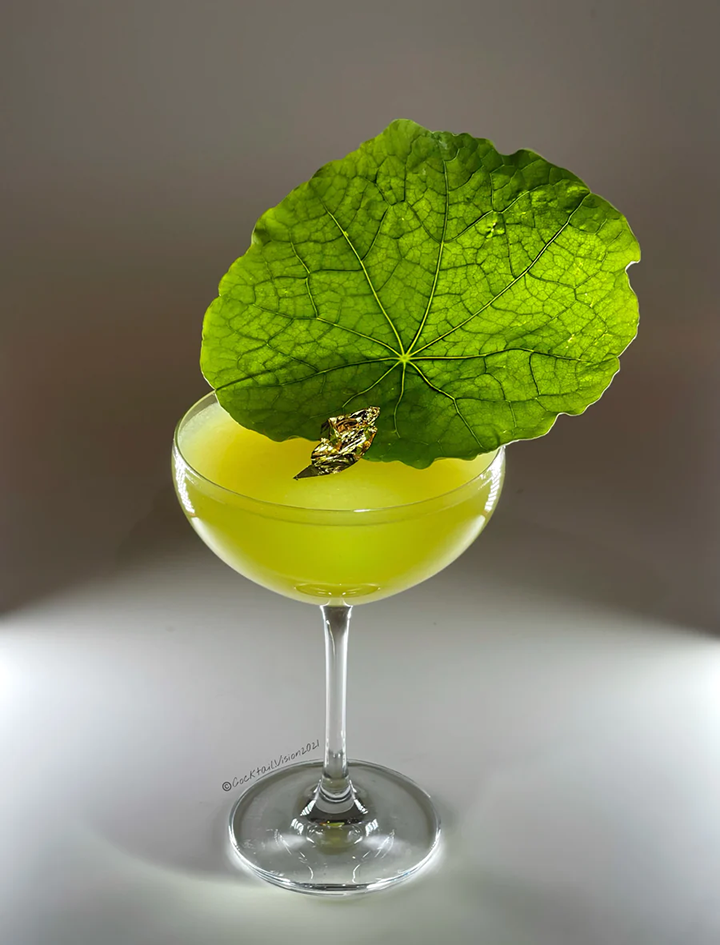
Ballet Of Eventide (Buenbicho Joven Mezcal Artesanal, sour apple liqueur, wheatgrass pineapple cold-pressed juice, fresh lemon juice, kiwi, and green chartreuse rinse). Photo courtesy ©️Cocktail.Vision2021
Cheers!
Mix Up Your Bar Program
Are you hoping to up your bar game in 2024? Don’t miss these beverage-centric sessions at Catersource + The Special Event 2024 (February 12-15 in Austin, TX):
- Bar & Beverage Catering 101 & Beyond!, presented by Roy Porter (Engage Works)
- Thirty F&B Trends to Watch for in 2024, presented by Shannon Boudreau (Lazy Gourmet)
- Evolution of Mocktails, presented by Jeriesha Carter Johnson and Andre Johnson (Divine Star Creations)
- Cocktail Cheat Codes, presented by Shannon Boudreau (Lazy Gourmet)
Photo courtesy Kathleen Stoehr
Margarita Tres Capas
Recipe courtesy Ryan Manning
Yield: 4-5
Ingredients
Method
-
Spoon the tepache pineapple mix on the bottom of the rocks glass.
-
Pour a solid layer of ice over the pineapple mix to avoid the layers mixing.
-
Pour the classic margarita over the ice up to about an inch below the rim.
-
Top the cocktail with the foam.
Ingredients for Margarita Classico
Method
-
Blend all ingredients together in a blender, except the zest.
-
Transfer to plastic bottle for service and then label, date, and refrigerate.
-
Wrap the zest tightly with plastic wrap (pressed directly onto it to prevent it from turning). Wrap, label, date, and refrigerate for service storing with the margarita batch.
Ingredients for Tepache Pineapple
Method
-
In a saucepan add all ingredients together over medium heat.
-
Cook for about five minutes stirring constantly to prevent burning. The finished product should form a syrup, but the pineapple will remain solid.
-
Chill until service.
Ingredients for Sangria Foam
Method
Combine sangria and Wonder Foam in shaker. Shake until a foam consistency is achieved.
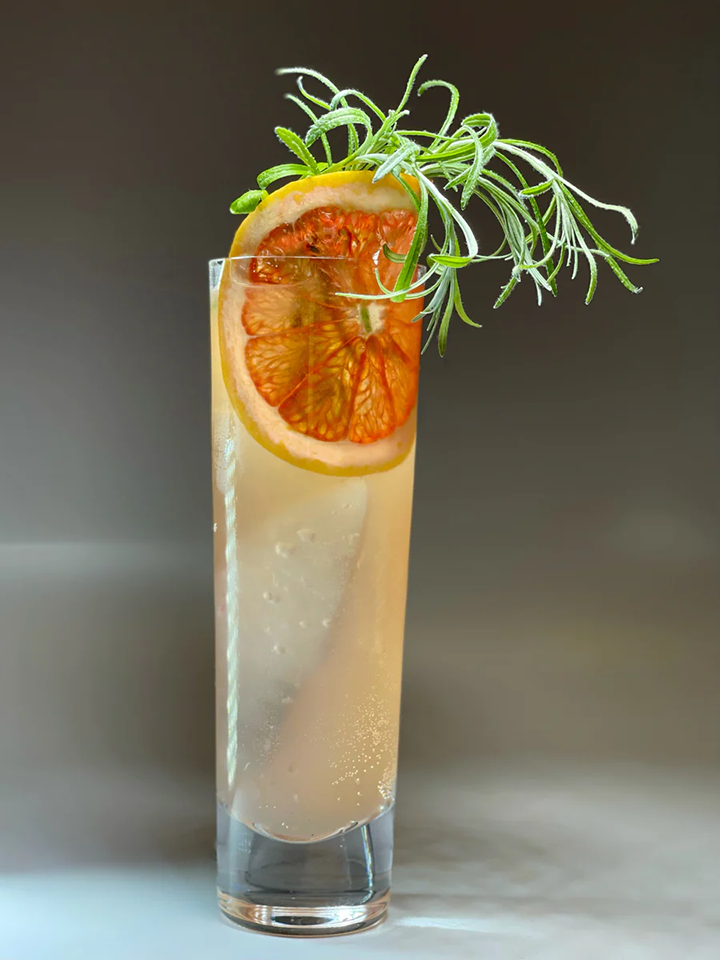
La Paloma
The details of the paloma’s origin are a little murky. Unlike many classic cocktails, which predate Prohibition, the paloma didn’t arrive on the scene until after 1938, when Squirt was first invented in Phoenix, AZ, according to Texas Monthly. It’s unclear how or when the paloma got its name, which is Spanish for “dove.” Some say it could have been confused or exchanged for pomelo, Spanish for “grapefruit,” as the spellings are similar.
Recipe and image courtesy ©️Cocktail.Vision2021
Yield: 1
Ingredients
Method
-
Place a long shard of ice into a Collins glass.
-
Add the rest of the ingredients gently one at a time. Top with ginger beer and stir gently just to combine the ingredients. Garnish.
Memories of Futures Past
Recipe and image courtesy @Cocktail.Vision2020
Ingredients
Method
In a cocktail shaker with a pinch of salt gently muddle a fresh rosemary sprig to extract the essential oils. Add the rest of the ingredients and plenty of ice. Shake it up well to chill and dilute your cocktail. Double strain into a chilled glass. Garnish with a rosemary sprig.


